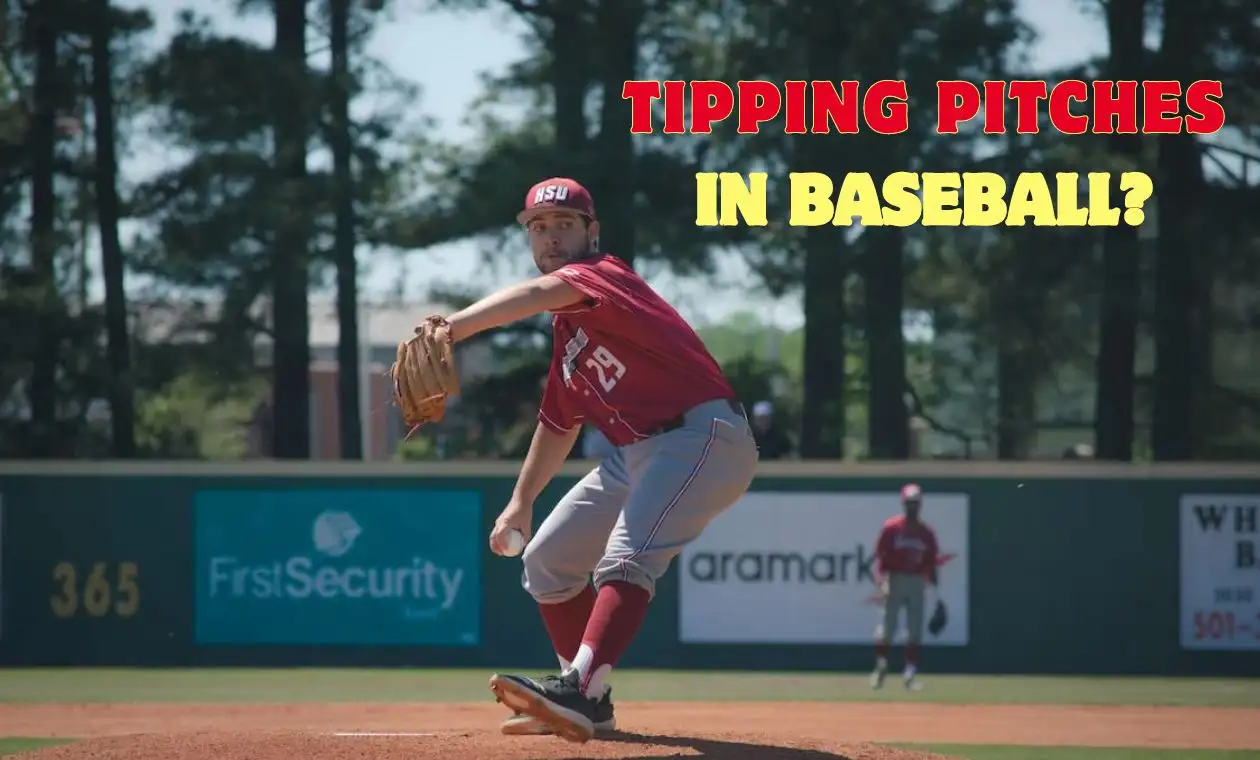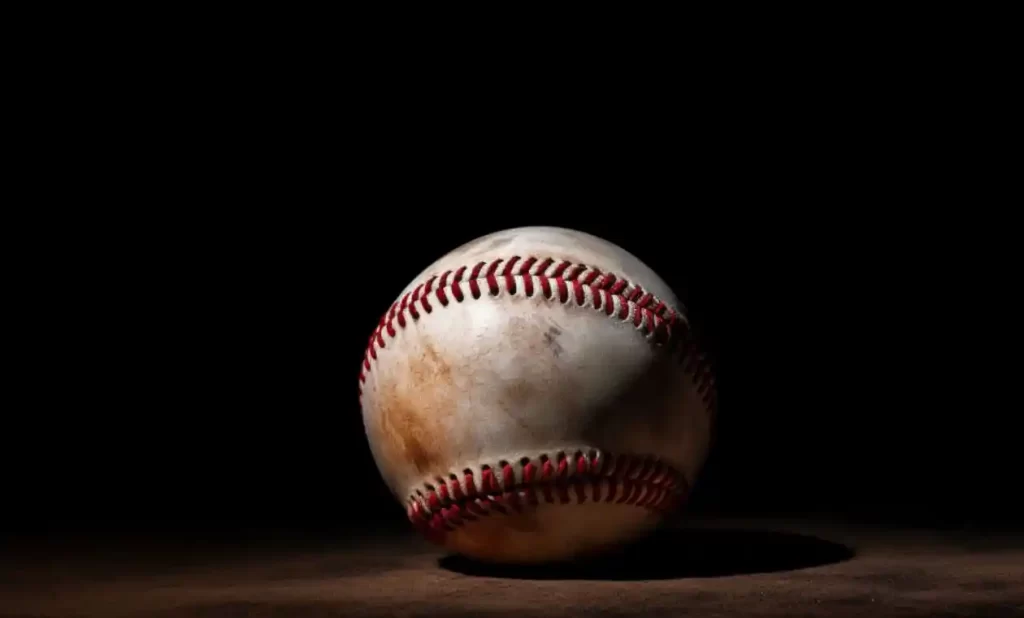
In the realm of baseball strategy, “tipping pitches” stands as a subtle yet crucial element. This phenomenon occurs when a pitcher unintentionally reveals the nature of the upcoming pitch through nuanced cues in their mechanics or delivery. Such cues can range from variations in grip to distinct changes in body language, opening a window of opportunity for the batter or opposing team to gain a significant edge in anticipating the pitch.
To grasp the concept better, envision a scenario where a pitcher unknowingly displays a different grip for a fastball compared to a curveball. If discerned by the batter before the pitch is released, this insight becomes a valuable tool in predicting the imminent play.
Understanding and addressing the issue of tipping pitches is paramount in the strategic landscape of baseball. The implications of a pitcher unintentionally divulging their pitch type can be profound. Hitters armed with this knowledge can approach their swings with heightened confidence, leading to more hits and fewer strikeouts.
For pitchers, the consequences are clear – increased predictability can result in a decrease in overall performance. Thus, the battle against pitch tipping becomes a fundamental aspect of a pitcher’s success on the mound.
As we delve deeper, this blog will explore the various ways pitchers might tip their pitches and delve into effective strategies to prevent such occurrences, ensuring a competitive edge in the game of baseball.
Also Read: Hitting the Cycle: A Baseball Guide
How Pitchers Tend to Tip Pitches
Grip Variations
One of the subtle ways pitchers inadvertently tip their pitches is through grip variations. Picture a pitcher having a distinct grip for a fastball compared to a curveball. This distinction, while imperceptible to some, can be a crucial giveaway for seasoned batters. If the batter can discern the grip during the windup, they gain a valuable advantage in predicting the type of pitch about to be thrown.
In addressing this issue, pitchers must diversify their grips strategically. Employing a variety of grips for different pitches adds an element of unpredictability, making it more challenging for batters to decode the upcoming play.
Delivery Techniques
Pitchers often employ different delivery techniques for various pitches, creating a potential tipping point. For instance, a pitcher might position themselves differently on the rubber for a fastball than for a changeup. Alternatively, they might use distinct arm angles for different breaking balls.
To counteract this, pitchers need to be cognizant of their delivery nuances. Analyzing video footage of their pitching performances allows them to identify and eliminate any inadvertent tells in their delivery, maintaining an air of unpredictability on the mound.
Unconscious Body Language
Unconscious body language is another avenue through which pitchers may unwittingly reveal their intentions. Subtle twitches, deeper breaths, or shoulder movements before a specific pitch can serve as unintentional signals to the opposing team.
Addressing this issue requires pitchers to stay focused on their mechanics while remaining relaxed. Overthinking can exacerbate the problem, so maintaining a calm and composed demeanor on the mound is essential in preventing unconscious giveaways.
In the subsequent sections, we will explore the repercussions of pitch tipping and delve into actionable strategies that pitchers can employ to minimize these tendencies and enhance their overall performance.
Also Read: Choose the Right Baseball Cap
Consequences of Pitch Tipping
Impact on Hitters
When pitchers inadvertently tip their pitches, the impact on hitters is profound. Armed with the knowledge of the upcoming pitch, hitters gain a heightened sense of confidence in their swings. The ability to anticipate the type of pitch allows them to adjust their approach, resulting in more precise and effective hits.
Pitch tipping empowers hitters to make split-second decisions with greater accuracy, potentially leading to a higher batting average and increased offensive success. Consequently, the pitcher becomes vulnerable to well-prepared and confident batters, jeopardizing their overall effectiveness on the field.
Potential Drawbacks for Pitchers
For pitchers, the repercussions of tipping pitches extend beyond the immediate at-bat. Increased predictability in pitch selection can lead to a rise in walks, hits, and potentially home runs. Opposing teams capitalize on this predictability, strategizing their offensive plays with greater precision.
Furthermore, the mental toll on a pitcher who realizes they are tipping pitches can be substantial. It creates a challenge not only in the game but also in maintaining composure and confidence on the mound. As a result, addressing and rectifying pitch-tipping tendencies is imperative for a pitcher’s sustained success.
In the upcoming sections, we will explore proactive measures that pitchers can adopt to avoid tipping their pitches, ensuring a more resilient and effective performance during the game.
Ways to Avoid Tipping Pitches
Self-Awareness in Mechanics
The first line of defense against pitch tipping lies in a pitcher’s self-awareness of their mechanics. Regularly reviewing video footage of their performances allows pitchers to identify any inadvertent tells in their delivery or body language. This self-analysis is a crucial step in recognizing and rectifying potential pitfalls, maintaining a level of unpredictability that keeps hitters guessing.
Pitch Variation Strategies
Diversifying pitch variations is a strategic approach to confound opposing hitters. The mantra here is simple – don’t throw the same pitch twice in a row. By incorporating a mix of fastballs, breaking balls, and changeups, pitchers keep hitters on their toes, making it challenging for them to predict the next move. This variation not only adds complexity to the game but also mitigates the risk of unintentional patterns emerging.
Importance of Diverse Grips
A pitcher’s grip on the ball is a critical aspect of pitch execution, and diversifying grips is a key tactic to avoid tipping. Varying grips for different pitches ensures that even if observed, the batter cannot definitively determine the upcoming pitch. This element of uncertainty is a valuable asset for any pitcher seeking to maintain the upper hand on the mound.
Staying Relaxed on the Mound
Amidst the strategic considerations, it’s essential for pitchers to stay relaxed on the mound. Overthinking or tensing up can inadvertently lead to tells in body language. By focusing on the pitch at hand and maintaining a composed demeanor, pitchers reduce the likelihood of unintentionally revealing their intentions.
As we progress, the blog will delve into the nuances of the game within the game, exploring how both pitchers and hitters constantly adapt and strategize in their quest for success on the baseball field.
The Game Within the Game
In the intricate dance between pitchers and hitters, the quest to uncover pitch tipping is ongoing. Coaches, players, and even opposing teams are vigilant in analyzing every move on the field, searching for any potential hints that could give them an edge. The constant scrutiny is not just a defensive measure; it’s an integral part of the strategic fabric woven into the very essence of baseball.
Both pitchers and hitters engage in a continuous strategic battle. Pitchers, aware of the consequences of tipping their pitches, constantly refine their techniques to maintain unpredictability. On the flip side, hitters keenly observe every nuance, looking for patterns that might reveal the upcoming pitch. It’s a mental chess match, where adaptability and quick thinking become the keys to success.
In the final stretch of this blog, we will summarize the intricacies of pitch tipping in baseball and emphasize how an understanding of these dynamics can significantly impact a player’s performance. Stay tuned for a conclusive overview of this fascinating aspect of the game.
Also Visit: Baseball Pitcher Coloring Pages
In Crux
In the game of baseball, the intricacies of pitch tipping stand as a constant challenge for both pitchers and hitters. The unintentional reveals, whether through grip variations, delivery techniques, or subtle body language, can sway the course of a game. The battle against pitch tipping is not just a technical aspect but a psychological one, where every movement on the field is scrutinized for potential advantages.
As we’ve explored, the consequences of pitch tipping are significant – from empowering hitters with confidence to affecting a pitcher’s overall performance. The nuances of this dynamic add a layer of complexity to the sport, making it imperative for players to grasp and address these subtleties.
The key takeaway for players lies in the commitment to continuous improvement. Pitchers must remain vigilant about their mechanics, grips, and overall delivery to minimize the risk of tipping pitches. Similarly, hitters must stay attuned to the slightest cues, always adapting their strategies to gain an upper hand.
This blog serves as a guide to understanding and navigating the challenges posed by pitch tipping in baseball. By fostering an environment of constant improvement, players can elevate their performance, ensuring a dynamic and unpredictable playing field for both pitchers and hitters.
As the curtain falls on this exploration, the essence of the game within the game prevails – an ever-evolving chess match where adaptability and skill are the hallmarks of success on the baseball diamond.
Suggested Article –

Meet Daniel Anderson, the heart and soul behind Baseball Pro Picks. At 49, Daniel’s life has revolved around baseball, a passion that’s as strong today as it was when he first fell in love with the game. Living in the USA, Daniel has dedicated countless hours to watching, analyzing, and understanding every pitch, hit, and home run, making almost no game missed. His deep-rooted love for the sport is matched only by his commitment to sharing insightful, expert analysis with fellow baseball enthusiasts. With decades of experience and a keen eye for the game’s nuances, Daniel brings a unique perspective that enriches Baseball Pro Picks. Trust Daniel to guide you through the intricacies of baseball with the authority and trustworthiness of a true aficionado.












